We all know that exercise is good for you, but when you understand why, it makes getting off the couch and into the gym a lot easier. Here’s an explanation of what happens when you work out, and how it can help you deal with the issues you’ll run into down the line.
Photos by Sebastian Kaulitzki (Shutterstock), joesuspense, Official U.S. Navy Imagery, Richard Masoner, Gabriel Amadeus, Jim Bahn, Terry Robinson, Official Navy Page
The body is a complex machine. While we like to think that when we work out we’ll immediately feel and look better, it’s not always that simple. A lot happens in your body when you first start working out, and the longer you work out the less things change. To get a grasp on what’s going on, I spoke with Brian Parr from the Department of Exercise and Sports Science at the University of South Carolina Aiken, and Dr Carly Stewart, medical expert at Money Crashers Personal Finance. Here’s what you can expect, what’s happening, and how you can use that knowledge to improve your workout routine.
What Happens When You First Start Exercising
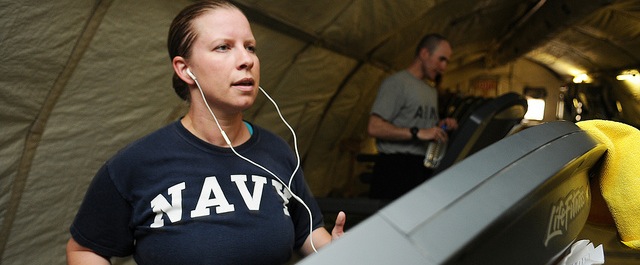
The first thing you notice when you start working out is that you’re out of breath and your pulse is high. This is always a bit disconcerting, but it’s perfectly normal. When you begin working out, your body responds by raising your heart rate and causing you to breathe heavily.
While those first few weeks are tough, exercise gets a lot easier as you go along, because your body starts adapting to your workout. Of course, everything in your body is connected, so while you might only feel a difference in your breathing or heart rate at first, Parr points out that it’s tied to your muscles as well:
The way you get the oxygen to the muscle fibres is by breathing oxygen into your lungs and then your heart pumps the oxygenated blood into your muscle. So, today you jump on the treadmill for the first time and you run three miles. Your heart rate is pretty high, your breathing is pretty heavy, and you feel pretty crappy. But if you do that every day for three or four weeks you’ll notice that at the same speed your breathing won’t be that hard. The reason for this is because your muscle has changed and it’s using oxygen a lot better which lowers your heart rate.
Those muscle changes are important, and it’s not exactly as simple as you might think. Depending on the type of exercise you’re doing your muscles can change in different ways:
For example, in your legs you have two different kinds of muscle: you have fast-twitch muscles and slow-twitch muscles. The slow-twitch muscle has muscle fibres that are better suited for long-duration endurance exercise. The fast-twitch fibres are better for short, high-intensity bursts. For example, a distance runner would have a lot of slow-twitch muscle fibres. Whereas a sprinter would have more fast-twitch muscle fibres.
Let’s say we all start at the same baseline where we have half slow-twitch muscle fibres and half fast-twitch muscle fibres. When you start an exercise program that’s about endurance, such as jogging, your muscle changes so it has more slow-twitch muscles and less fast-twitch muscles. This means your muscles can generate force for a longer period of time without fatiguing.
Why Your Muscles Feel Sore
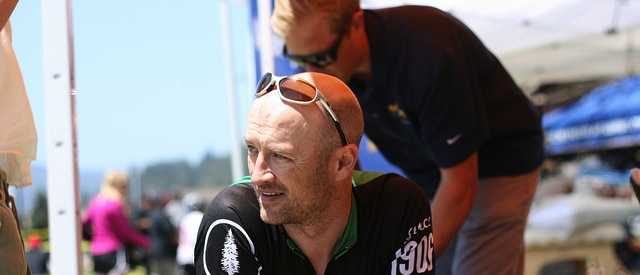
The awful truth of exercise is that while it can make you feel better over time, you’re going to feel pretty bad at the beginning. The reason, as Parr notes, is that exercise actually damages your muscles:
Someone who has been a couch potato for a while and starts working out will notice that they’re sore. What’s happening is they’re doing microscopic damage to their muscles each time they work out. It sounds bad, but it’s actually good. The muscle responds by repairing itself and that makes the muscle stronger than it was before.
It’s not the old adage of “no pain, no gain” though. You need to be careful when you’re first starting because an injury will often cause you to drop exercise altogether. Thankfully, we know what you should expect to feel when you first start:
So you’re sore, and you’re weak. That’s because the muscle damage causes inflammation and pain. That’s a critical part of the muscle adapting and getting stronger. That soreness usually lasts for 24-48 hours. It’s called delayed onset muscle soreness. People should feel it, but it shouldn’t make them never go back.
Dr. Stewart also points out that what you need to watch out for is “severe pain”:
Minor to moderate pain or soreness is considered normal. Severe pain, however, is considered abnormal, and may be caused by overexertion or poor breathing techniques.
Both Stewart and Parr note that you’ll experience a little pain, but it’s a necessary step. If it gets to a point where you can’t do the exercise again, you need to back off and lower the intensity a bit until your muscles catch up. Take days off in-between exercises, or work different groups of muscles. If you do push yourself too hard, take some time to recover and treat yourself right.
Why Exercise Makes You Feel Better
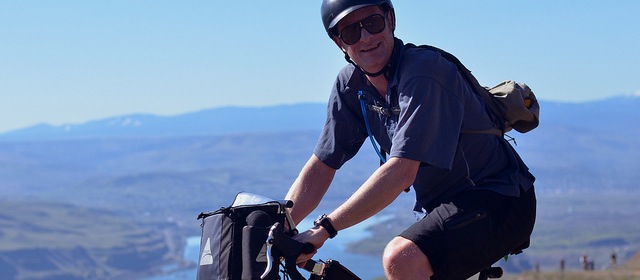
We always hear that exercise makes you feel better in all sorts of ways. From the brain to the lungs, you benefit from a little exercise every day. That doesn’t really mean anything to you until you actually start exercising though. In addition to everything above, Parr notes a few other changes you’ll feel right away that make life a bit easier:
The other thing that happens is your heart gets bigger and stronger. Those are the things that people notice. You’re getting these changes in the muscle that actually make exercise feel easier. In addition to your heart rate slowing down and your heart getting bigger and stronger, your blood vessels become more elastic. That’s really good. That means your blood pressure can be lower.
Additionally, you’re also burning calories and fat, which contributes to weight loss. Your body typically burns calories from carbohydrates for energy first, and then moves onto burning fat as a source of energy. When you burn more calories than you take in, you’ll tap into fat for energy and lose weight. If you don’t use calories for energy, your body starts to store them as fat cells for an energy reserve.
On top of easier breathing, a lower pulse, lower blood pressure, and everything else, your brain function also improves. Dr Stewart explains why:
Exercise improves oxygen flow to the brain. It also helps the body release hormones that assist in brain cell growth. Additionally, it helps the brain with both learning and memory capabilities.
Dr Stewart adds that you’ll feel these improvements pretty quickly, even if you don’t see a change in your body:
Generally speaking, you can expect to feel healthier and stronger after two to three weeks of exercise (along with a proper diet). However, you may not see any significant changes in muscle growth or weight loss (depending upon your goals) until after the first few months.
Essentially, when you start exercising, you feel better because your brain and body can do more. You’re not winded walking up stairs. Your heart rate and blood pressure goes down, which decreases your risk for a number of diseases and gives you more energy. Your brain benefits from the added oxygen which helps you perform basic tasks more easily.
Use Science To Pick The Right Workout
So what can you do with this information? Depending on your goals, certain workouts are better than others. Since your muscles and body react differently to different workouts, it’s important to come up with your goal first, and then chose the workout.
If You Want to Just Maintain a Healthy Lifestyle
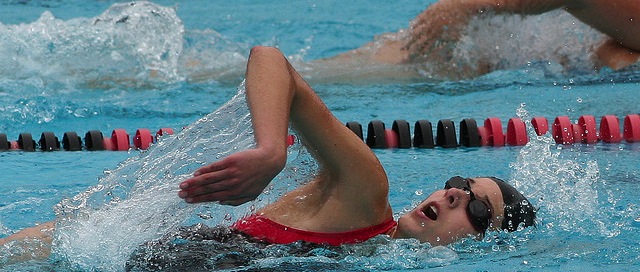
If all you want to maintain a healthy lifestyle, your best bet is to work out all your muscles in a few different ways. Parr notes that for most people, the usual recommendation of 30 minutes of moderate intensity workouts a day — including walking, jogging, swimming, or biking — is a good starting point for most people.
We’ve featured a bunch of low impact exercises, and the Lifehacker Workout is excellent for keeping yourself in shape without working yourself too hard.
That said, if you don’t have a lot of time, exercises like the seven-minute full workout or the 20-minute workout make it a bit easier to fit a workout into your schedule. You won’t see big fitness gains, but your overall health will remain consistent. Once your body adapts to what you’re doing, it doesn’t continue to build on that muscle. Parr suggests that for some of us, this is fine:
One of the things we’ve learned is that health benefits can come from a lot less than what you need to see the strength and endurance benefits. Someone who goes from nothing to doing about 30 minutes of exercise a day will see a big improvement in their health and maintain that. Obviously it gets better if they add more time to that. The benefits sort of plateau. It’s benefits like better control of blood sugar, lower blood pressure, and lower blood cholesterol, so those are good things to have plateau.
Essentially, if you can consistently keep up the 30 or so minutes a day of exercise then you’re on the right track to maintaining a healthy lifestyle. You’re not going to see big endurance or muscle gains, but you’ll hit the targets needed to improve your health.
If You Want To Lose Weight
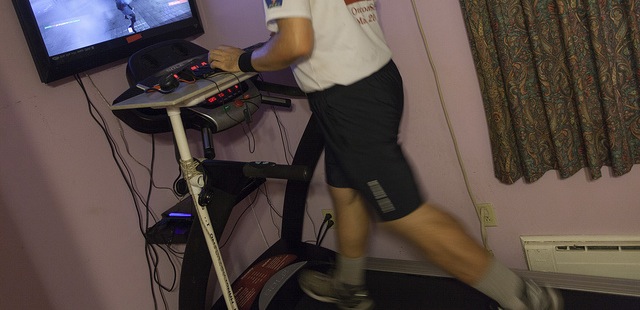
Losing weight requires a different approach because you want to work the slow-twitch fibres in your muscle more that the fast-twitch. Parr explains:
When you exercise for a longer duration, you’re going to use the slow-twitch fibres that are really good at burning fat. If you went and did a couple of hundred-metre sprints for your workout, it only works the fast muscle fibres, and they use primarily carbohydrates and don’t burn that much fat at all. For example, when you get on an elliptical or treadmill you can push the “fat burning” button, it will be longer and lower intensity because that favours the muscles that are going to burn more fat. So if you do a jog instead of a sprint, you’re burning more fat.
That said, it’s not entirely cut and dried. While lower intensity workouts are better at helping you lose weight, you still need to mix it up a little:
It also depends on how many calories you burn. So you could walk really slowly, but that’s burning just fat and you’re not burning that many calories. So there’s a balance between whether you burn more fat in the muscle and how many total calories you’re burning. Somewhere in the moderate intensity range is probably right.
Moderate intensity exercise is a little different for everyone depending on your starting point, but it can range from a brisk walk to swimming. The Mayo Clinic suggests that moderate exercise means: your breathing quickens a little, you develop a light sweat after about 10 minutes of exercise, and you can carry on a conversation but can’t sing.
Of course, when you’re losing weight, you also need to moderate your diet. Dr Stewart has a few suggestions for balancing that diet with your new workout routine:
The best way to support a healthy exercise regimen is to moderately increase carbohydrate intake, in addition to eating foods high in healthy fats. Foods high in carbs that support a workout program are whole grains, dairy products and fruits and vegetables. Foods high in healthy fats include avocados, fish, peanut butter, and olive oil.
If you need a little help with motivation, we’ve shown you how to track your weight loss and the science behind weight loss can help you keep that extra weight off.
If You Want To Increase Your Strength Or Endurance
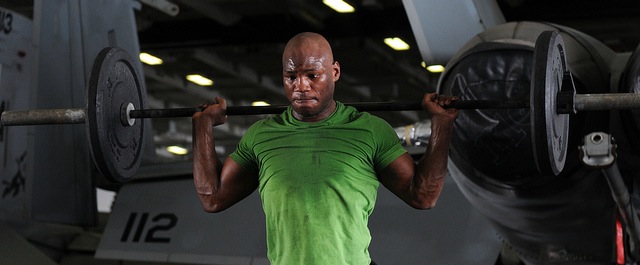
Strength and endurance training are where things get a bit harder to track. As we noted above, the more you work out, the more your body adapts. That means you need to keep pushing it if you want to see improvements in your strength or endurance. Since muscles grow when you push them too hard it eventually gets difficult to do that:
Once your muscles start to adapt, what you’ll need for anything to happen is “overload”. The first time you lift weights that’s a lot of overload because you’re used to doing nothing. Then over time it gets easier. That’s when people increase their weight. They do that to generate the overload to continue the adaptation. That progression is true for lifting weights, or endurance performance, or anything else.
We’ve talked before about getting over plateaus. It’s a combination of overloading your muscles, and managing your diet. For weight training, this just means increasing your weights so your muscles continue to adapt. For endurance training, it means upping your distance or intensity. As Parr notes: “If you do a little you’re going to get stronger, if you do a little more, you’ll get stronger still.”
When all is said and done, exercise is about finding a good medium. When you know what kind of results you want, and what your reasons are behind exercising, it’s a lot easier to actually pick a workout you’ll stick with.
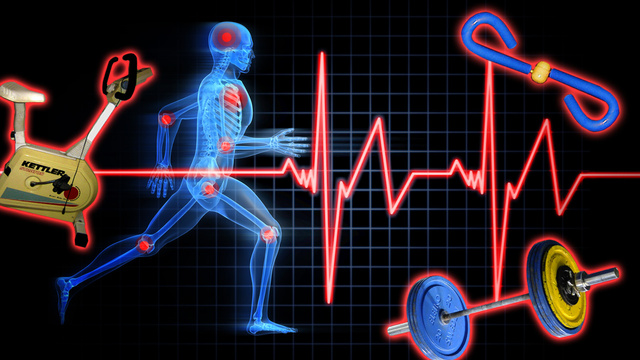
Comments
6 responses to “How Exercise Affects Your Body (And How To Pick The Right Workout)”
This is broscience – urban legend. It was once believed to be true, but when put up the the microscope the hypothesis didn’t pan out. The truth is science doesn’t know what causes DOMS (delayed onset muscle soreness) yet.
I’d love to cite my sources but I don’t have the time right now – I’ll google for it later maybe.
My gut feeling is that this article is using magazines like Men’s Health etc. as a source of information, rather than scientific or medical peer reviewed journals. You can find science-based fitness communities and sites on the internet if you want to learn what other things you thought were true that are in fact false
I only did a very short search, but on the first page of PubMed (one of the larger academic literature databases) there were plenty of articles that confirmed that muscle damage (usually during eccentric phases) is considered one of the primary mechanisms that causes DOMS. They were all in reputable journals (MSSE, JSS, etc), and were highly cited.
What sort of sources were you looking at that disagree? (Genuine question, I’m quite curious).
If what you say is correct, update Wikipedia because it thinks this article is correct.
“The best way to support a healthy exercise regimen is to moderately increase carbohydrate intake”.
This is questionable, seeing as it would spike your insulin, stopping your body from burning fat and switching to sugar. In my experience, intermittent fasting coupled with high fat food (nuts, meat, eggs etc) is a better move.
I find the biggest problem with exercise is the same as the biggest problem with diet: every jackass has bent the limited facts available into forming an opinion that they deliver confidently as hard fact, and if you amalgamated all the opinions into one, you’d never be able to do or eat anything, ever. That, combined with the vagueness of some of the science behind both and the variability of the human body, and you have a mess that the average person has a hard time navigating.
Give me the hard sciences any day, at least they’re easier to run controlled experiments for.
I’ve been a member of the 24-hour gym for the last six months and visited it only once!!!
Interestingly as a lot of people say it is really true that exercise and diet go hand-in-hand. There’s no question that when I exercise a lot I tend to eat much healthier food.
But more interestingly I have noticed when I try and eat a healthy diet I am slightly more motivated to exercise and to that extent it works both ways.
However regular exercise has a much bigger impact on my diet then dieting has on my motivation to exercise. so it works more one way then the other I think
Do you guys agree?